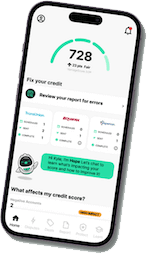654 Credit Score: What It Means and How to Improve It

A 654 credit score is considered fair, and while it may come with higher interest rates, it doesn’t shut you out of loans or credit cards. This guide breaks down what a score of 654 means for your borrowing power, how to improve it, and why small changes—like lowering your debt or fixing credit report errors—can make a big difference fast.
You decide to check your credit score, and find out it’s lower than you thought. A 654?! You swore your score was higher than a 700. So what does a credit score of 654 mean in regards to accessing and borrowing money?
Here’s a friendly guide that covers lending opportunities, improvement strategies, and how credit scores really work.

What a 654 Credit Score Really Means
A credit score of 654 is classified as a fair credit score and reports indicate that the average American has a credit score of 716. So a score of 654 falls below average, but the important part is that you’re not actually that far away from reaching the average and entering the good credit score range.
Lending Options with a 654 Credit Score
Even with a fair credit score, you still have access to borrow money—though interest rates may not be as ideal as those with a good credit score.
Credit Cards
Some credit card issuers may approve you for unsecured cards, but expect higher interest rates and possibly high fees. Secured credit cards can be a stepping stone to credit building as your credit limit is based on the money you put in.
Auto Loans
Yes, you can get a car loan! Many lenders offer financing to people with credit scores in the 650s. Just be prepared for interest rates between 8% and 15%, depending on income or down payment.
Home Loans
A 654 credit score may qualify for FHA loans, which allow credit scores as low as 580. You might need to pay mortgage insurance and put down at least 3.5%. Conventional loans may be harder to secure without a co-signer or large down payment.
How to Improve a 654 Credit Score
Improving your credit report and score can seem daunting at first but with a few simple changes, you are on your way to a higher credit score. Here’s some practical steps you can take to create good credit habits:
Pay Down Debt
Reducing your credit card balances can quickly improve your credit score, especially if you’re above 30% credit limit utilization. Other debts impact your credit too.
Set Up Auto-Pay
Missing payments is one of the fastest ways to lower your credit score. Automating your bills helps you avoid slip-ups and ensures you pay your bills on time.
Use a Secured Card
If you’re working on credit building, a secured credit card can be a great tool. Use it responsibly, and it can raise your credit score over time.
Dispute Credit Report Errors
According to the FTC, 1 in 5 people has an error with at least 1 of the bureaus; Experian, Equifax and TransUnion. Services like Dovly can help you dispute and remove these inaccuracies.
How Long Does It Take to Go from 654 to 700?
The more effort you put into managing your credit file, the faster you’ll see results. Improvement timelines depend on your unique credit file, but here’s a general estimate:
- With light changes: 6–12 months
- With significant changes (like paying off debt): 3–6 months
Understanding Credit Scores
Improving your credit score starts with understanding what actually goes into it. The FICO scoring model is based on five key components:
1. Payment History (35%)
The largest factor in your credit score reflects whether you’ve upheld past credit obligations on time. Missed or late payments, charge-offs, collections, and public records all negatively impact this category. Even one late payment can significantly lower your credit score.
2. Credit Utilization Ratio (30%)
Credit utilization refers to the amount of available credit you’re using. For example, if you have a combined credit limit of $10,000 and carry a balance of $3,000, your utilization is 30%. Higher utilization signals to lenders that you may be financially overextended.
3. Length of Credit History (15%)
This includes the age of your oldest account, the age of your newest one, and the average age of all your credit accounts. A longer credit history generally indicates a more stable borrower.
4. Credit Mix (10%)
Credit mix looks at the variety of credit types you manage—such as credit cards, retail accounts, installment or auto loans, and mortgages. Having a healthy mix shows lenders that you can handle different kinds of financial obligations responsibly.
5. New Credit Inquiries (10%)
When you apply for new credit, a hard inquiry is placed on your credit report. Too many credit checks within a short time frame can signal higher risk to lenders, which can reduce your credit score.
Credit Scoring Models and Ranges
There are two main credit scoring models that are used today: FICO which is used in 90% of lending decisions and VantageScore which updates faster and is often used by free credit monitoring apps. Both use the 300–850 scale, but they weigh factors differently. Here’s a quick reference for the different ranges:
- Excellent: 800–850
- Very Good: 740–799
- Good: 670–739
- Fair: 580–669
- Poor: 300–579
At 654, you’re near the upper end of the fair score range. Just a few smart moves could push you into the good range and eventually reaching the excellent credit score range.

Conclusion
A 654 credit score is a fair score and a solid starting point, but there’s room to grow. Paying your bills on time and lowering debt can get you lower interest rates and better terms. If you’re wanting to reach higher scores, consider using Dovly, a smart credit engine that tracks, manages, fixes and builds your credit. Sign up today and take control of your financial future.
Frequently Asked Questions
Is 654 a good credit score?
Can I buy a house with a 654 credit score?
How many people have a 650 credit score?
Can I buy a car with a 654 credit score?



